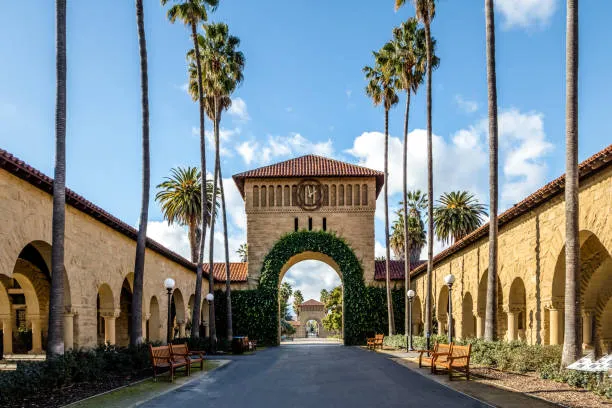Table of Contents
The Stanford of 2013—when the university was last accredited—seems very different from the Stanford we are burdened with now. Last month, on January 18, 2023, Stanford submitted its accreditation report to the regional accreditation agency—the Western Association of Schools and Colleges (WASC)—responsible for Stanford’s re-accreditation. College accreditation agencies like WASC ensure institutions of higher education in the U.S. meet certain thresholds of excellence so they can receive federal aid and give students diplomas, among other functions. In the face of many scandals and a general lack of faith in the administration, Stanford is up for re-accreditation this year.
According to a recent press release, accreditation was included on the agenda of the Board of Trustees’ first meeting of 2023, which occurred last week. Stanford’s admin seems to be walking on eggshells for the upcoming accreditation, and I’d encourage students to seriously question whether Stanford deserves accreditation.
The report Stanford prepared for WASC can only be accessed by those with a Stanford SUNet ID. When I tried to copy and paste sections into a notes file, I was alerted: “Options to download, print, and copy have been disabled on this file.” The function to search the document for keywords (e.g. ResX) was also disabled. Already, it looks like Stanford has something to hide. Lucky for the critics of the MTL regime—and those generally curious about Stanford’s internal affairs—I took it upon myself to transcribe some of the most important passages in the report.
In the report’s first Thematic Pathway for Reaffirmation or TFR (of course Stanford had to add another slew of acronyms even in a bureaucratic report), reimagining liberal education, many failures of Stanford’s education come through. For example, a survey on the new freshman COLLEGE requirement highlights self-censorship on campus.
The report states:
On surveys, students were asked if there was ever a time when they did not feel comfortable stating their opinion. The 42% of students who selected “yes” or “not sure” were given further prompts to describe barriers to expressing opinions. Two themes were frequently mentioned in responses: 1) Some weren’t comfortable voicing opinions that they thought would be unpopular and that their peers would interpret as conservative; 2) Some students lacked confidence to speak in class or thought that they didn’t have as much to add as their peers. Later iterations of Why College and Citizenship incorporated the results of these evaluations and developed strategies, such as focusing class discussions on historical readings and issues that do not clearly align with current political values (e.g., liberal or conservative).
Of course, Stanford’s best solution to a lack of comfort in expressing ideas is to avoid controversial ideas altogether, as per the last sentence. Despite ongoing public commitments from the administration to focus on academic freedom, the survey results prove, alongside the now infamous banned words list, and suspension of the Tree that Stanford is in violation of WASC’s standard CFR 1.6: that “The institution maintains, publishes, and adheres to policies on academic freedom.”
Those pesky Ways requirements that all undergrads are forced to take to maintain the guise of a ‘liberal education’ are also kept in place despite questionable pedagogical merit. The report states that “Transcript analyses revealed that the implementation of the Ways requirement has not resulted in a noticeable increase in breadth of student coursetaking.” Despite this discovery, Stanford refuses to change its program in violation of WASC standard CFR 3.10, that “Data are regularly and systematically disseminated internally and externally, and analyzed, interpreted, and applied in institutional decision-making.”
Though Stanford can hide behind data-driven decision making in its WASC report, such as Psychology Professor Jamil Zaki’s research on freshman friend groups informing the new Neighborhood System, it doesn’t refute the fact that many decisions Stanford makes aren’t data-driven. At the very least, the data is not made clear to students. For example, the Neighborhood System (barely mentioned in the report) will stay alive for the foreseeable future despite widespread student backlash. The regime’s method of sticking to bad decisions does not just dampen student life, it can actively keep students unsafe. The new alcohol policy stays in place despite high hospitalization rates—questionably ‘data-driven’ and inflexible to the point of disaster.
These two admissions from Stanford’s report are the tip of the iceberg: scandal after scandal has plagued the university for the last few years but within the past few months, the atmosphere of impropriety became nearly permanent. From imposter students and Marc Tessier-Lavigne purportedly falsifying scientific data to an explosive lawsuit over Katie Meyer’s tragic suicide and the suspension of the Tree mascot, Stanford has been in the spotlight for all the wrong reasons. As accreditors walk the hallowed halls (and construction-blocked pathways) of this university next month, the Board and admin have plenty to be worried about.
It is unlikely that Stanford will be denied accreditation because of its reputation, near $40 billion endowment, and the power that it exerts in Silicon Valley. However, Stanford has been playing PR defense for years on end… who’s to say that student protests of accreditation won’t be the straw that breaks the camel’s back? A handful of students protesting re-accreditation in front of WASC representatives could be enough to signal that students have lost faith in the current administration. Even if de-accreditation is out of the picture, WASC can use Stanford’s accreditation as leverage to push for higher student satisfaction, giving Stanford a timeline to implement big fixes as it has done for other schools.
My plea to Stanford students (and alumni): push for de-accreditation! Reach out to members of the WASC visit team. For your convenience, their emails are listed below. The visit team will be on campus March 15-17. What better way to celebrate the end of Week 10 than to protest against MTL and the current administration?
Their emails are as follows:









